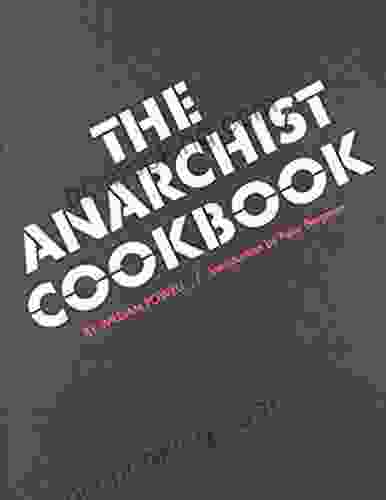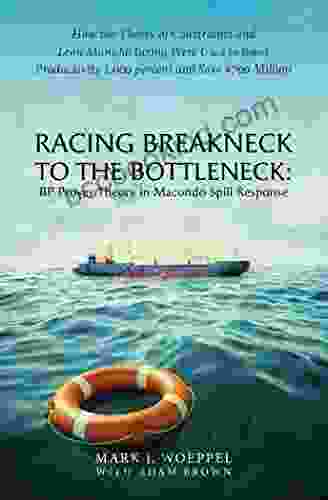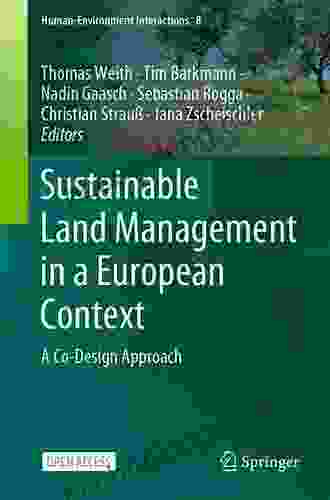BP Proves Theory In Macondo Spill Response: Unlocking the Secrets of Disaster Management

In the aftermath of the catastrophic Deepwater Horizon oil spill in 2010, the world witnessed an unprecedented disaster unfolding in the Gulf of Mexico. In the face of such adversity, BP, the multinational energy company responsible for the spill, found itself at the forefront of one of the most challenging environmental crises in history.
As the world watched in horror, BP embarked on a herculean effort to contain and mitigate the spill's devastating impact. It was during this crisis that BP unknowingly validated a long-held theory in disaster management, proving its transformative power in the most trying of circumstances.
4 out of 5
| Language | : | English |
| File size | : | 3119 KB |
| Text-to-Speech | : | Enabled |
| Screen Reader | : | Supported |
| Enhanced typesetting | : | Enabled |
| Word Wise | : | Enabled |
| Print length | : | 70 pages |
| Lending | : | Enabled |
The Theory of Resilient Response
The theory of resilient response posits that an effective disaster response hinges upon three fundamental elements: planning, collaboration, and innovation. By meticulously preparing for potential crises, fostering strong partnerships, and embracing creative problem-solving, organizations can significantly enhance their ability to weather and overcome adversity.
In the case of the Macondo spill, BP's application of these principles proved invaluable in mitigating the disaster's impact. This article will delve into the specific ways in which BP's response exemplified the theory of resilient response, offering valuable insights for organizations seeking to strengthen their own disaster preparedness and management capabilities.
Planning: Laying the Foundation for a Swift Response
Prior to the Macondo spill, BP had invested heavily in developing comprehensive contingency plans for various potential emergencies. These plans outlined clear protocols for containment, recovery, and communication, ensuring that all necessary resources and personnel were mobilized promptly upon the occurrence of an incident.
As a result of this meticulous planning, BP was able to swiftly activate its emergency response team, deploy equipment to the spill site, and initiate containment measures within hours of the explosion. This early intervention played a crucial role in limiting the spill's spread and reducing its environmental damage.
Collaboration: Uniting Diverse Expertise
In the face of a disaster of such magnitude, no single entity possesses all the knowledge and resources necessary to mount an effective response. BP recognized this limitation and actively sought out collaborations with government agencies, industry experts, and academic institutions.
By pooling their collective expertise, these stakeholders formed a multidisciplinary response team that brought together a wealth of perspectives and capabilities. This collaborative approach allowed BP to leverage the best available technology, scientific knowledge, and operational experience in its efforts to combat the spill.
Innovation: Embracing Unconventional Solutions
In addition to planning and collaboration, BP also demonstrated remarkable innovation in its response to the Macondo spill. Faced with unique and unprecedented challenges, BP's engineers and scientists worked tirelessly to develop creative solutions that had never been attempted before.
One notable example was the use of subsea dispersants, which were deployed to break down the oil slick and prevent it from reaching sensitive coastal ecosystems. This innovative approach had not been widely used in the past but proved highly effective in reducing the spill's environmental impact.
The Legacy of the Macondo Spill: Lessons Learned and Future Implications
The Deepwater Horizon oil spill was a defining moment in the history of disaster management. BP's response, guided by the principles of resilient response, proved that even in the most challenging circumstances, organizations can rise to the occasion and overcome adversity.
The lessons learned from the Macondo spill have had a profound impact on disaster preparedness and management practices around the world. Governments, businesses, and non-profit organizations have revisited their own contingency plans and emphasized the importance of collaboration and innovation in disaster response.
In the face of seemingly insurmountable challenges, BP's response to the Macondo spill demonstrated the transformative power of resilient response. By meticulously planning, fostering collaboration, and embracing innovation, BP effectively mitigated the spill's impact and set a new standard for disaster management.
As we navigate an increasingly complex and interconnected world, the theory of resilient response offers invaluable guidance for organizations seeking to enhance their ability to withstand and recover from adversity. By embracing these principles, we can create more resilient communities and build a more sustainable future for all.
4 out of 5
| Language | : | English |
| File size | : | 3119 KB |
| Text-to-Speech | : | Enabled |
| Screen Reader | : | Supported |
| Enhanced typesetting | : | Enabled |
| Word Wise | : | Enabled |
| Print length | : | 70 pages |
| Lending | : | Enabled |
Do you want to contribute by writing guest posts on this blog?
Please contact us and send us a resume of previous articles that you have written.
 Book
Book Novel
Novel Page
Page Chapter
Chapter Text
Text Story
Story Genre
Genre Reader
Reader Library
Library Paperback
Paperback E-book
E-book Magazine
Magazine Newspaper
Newspaper Paragraph
Paragraph Sentence
Sentence Bookmark
Bookmark Shelf
Shelf Glossary
Glossary Bibliography
Bibliography Foreword
Foreword Preface
Preface Synopsis
Synopsis Annotation
Annotation Footnote
Footnote Manuscript
Manuscript Scroll
Scroll Codex
Codex Tome
Tome Bestseller
Bestseller Classics
Classics Library card
Library card Narrative
Narrative Biography
Biography Autobiography
Autobiography Memoir
Memoir Reference
Reference Encyclopedia
Encyclopedia Tommy Hicks
Tommy Hicks Tracy Martin
Tracy Martin Scott Anderson
Scott Anderson Tony Hawk
Tony Hawk Stewart O Nan
Stewart O Nan Steve Higgs
Steve Higgs Don Orwell
Don Orwell William F Stark
William F Stark Stephen Tarsitano
Stephen Tarsitano Thad Vogler
Thad Vogler Ripple Books
Ripple Books Sloan De Forest
Sloan De Forest Vijaypat Singhania
Vijaypat Singhania Wilf Mbanga
Wilf Mbanga William Albert Robinson
William Albert Robinson Tom Swimm
Tom Swimm Thomas Tregner
Thomas Tregner Maki Enjoji
Maki Enjoji Ursula Goodenough
Ursula Goodenough Tom Callahan
Tom Callahan
Light bulbAdvertise smarter! Our strategic ad space ensures maximum exposure. Reserve your spot today!

 Garrett PowellMaster the Court with Scott Meyer's "Second Serve": An Unrivaled Guide to...
Garrett PowellMaster the Court with Scott Meyer's "Second Serve": An Unrivaled Guide to... Harold BlairFollow ·6.9k
Harold BlairFollow ·6.9k Lord ByronFollow ·3.4k
Lord ByronFollow ·3.4k Jonathan HayesFollow ·7.1k
Jonathan HayesFollow ·7.1k Lucas ReedFollow ·13.2k
Lucas ReedFollow ·13.2k Terence NelsonFollow ·15.4k
Terence NelsonFollow ·15.4k Paulo CoelhoFollow ·14k
Paulo CoelhoFollow ·14k George HayesFollow ·2.8k
George HayesFollow ·2.8k Robert ReedFollow ·19.6k
Robert ReedFollow ·19.6k

 Amir Simmons
Amir SimmonsImmerse Yourself in the Enchanting Realm of Nora Roberts'...
Prepare to be captivated by...

 Dan Henderson
Dan HendersonUnleash the Explosive Action of Going Ballistic Combined...
Prepare for an...

 Jeffery Bell
Jeffery BellDiscover the Controversial and Captivating "The Anarchist...
In the realm of literature, there are...

 Ryan Foster
Ryan FosterUnveiling Lincoln's Eloquence: How His Greatest Speeches...
In the annals of American...

 Jaime Mitchell
Jaime MitchellLove Radio Vinny Berry: A Journey of Heartbreak, Healing,...
Vinny Berry's...
4 out of 5
| Language | : | English |
| File size | : | 3119 KB |
| Text-to-Speech | : | Enabled |
| Screen Reader | : | Supported |
| Enhanced typesetting | : | Enabled |
| Word Wise | : | Enabled |
| Print length | : | 70 pages |
| Lending | : | Enabled |












